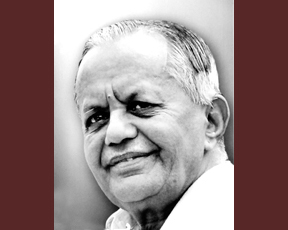Hassan, Jan 6: Freedom fighter, former Minister and well-known Gandhian HG Govinde Gowda breathed his last at his residence near Koppa in Chikkamagaluru district on Wednesday. He was 90.
 The politician with a difference had been suffering from old-age-related health problems for the last few months. For the last one month, he was bed-ridden and was treated at his home ‘Manipura’.
The politician with a difference had been suffering from old-age-related health problems for the last few months. For the last one month, he was bed-ridden and was treated at his home ‘Manipura’.
Born on May 25, 1926, he was actively involved in the freedom struggle and got into politics later in Independent India through the town municipal council. He was known as ‘Malnad Gandhi’
He was elected president of Koppa Municipal Council in 1952. He was elected to the Legislative Assembly from Sringeri constituency for the first time in 1983. He was Minister for State for Primary Education and Adult Education between 1983 and 86.
Later in the Deve Gowda Cabinet, he was Primary and Secondary Education Minister. During his tenure, he was instrumental in introducing a common entrance test to recruit teachers. More than 90,000 teachers were appointed when he was the Minister. He quit politics in 1999, as his term as MLA came to an end.
He is survived by a wife and six children. The final rites would be held at his residence in Koppa on Thursday.





Comments
INNALILAHI WA INNA ILAYHI RAJIOON
RIP
Add new comment